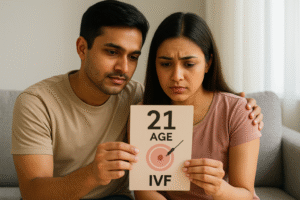Overview
When your monthly cycle becomes a thing of the past, you’ve entered a new chapter called postmenopause. This transition marks the permanent end of your reproductive years, bringing both challenges and freedoms. As specialists at Ova Fertility and Women’s Care, we’ve guided countless women through this significant life transition with compassion and expertise.
What Exactly Is Postmenopause?
Postmenopause officially begins when you’ve gone 12 consecutive months without a menstrual period. At this point, your body is no longer ovulating or releasing eggs, and pregnancy is no longer possible naturally. While the average age for reaching postmenopause is around 52, every woman’s timeline is unique.
Unlike the sometimes turbulent perimenopausal years, postmenopause typically brings more stability to your hormonal landscape. Many women find relief as symptoms that may have disrupted their lives during menopause begin to subside.
Common Postmenopausal Symptoms: What Persists and What Fades
While hot flashes and night sweats often become less intense or disappear entirely during postmenopause, some women experience lingering effects for years. These persistent symptoms stem from permanently lower estrogen levels in your body.
Common postmenopausal symptoms include:
- Vaginal dryness and pain during sex, which can affect intimacy and relationships
- Changes in mood, including depression or anxiety
- Decreased sex drive (low libido)
- Sleep disturbances like insomnia
- Skin changes and hair loss
- Urinary incontinence and bladder concerns
It’s important to distinguish between expected postmenopausal changes and potential health concerns. For instance, postmenopausal bleeding is never normal and requires prompt medical evaluation to rule out serious conditions like endometrial hyperplasia, uterine fibroids, endometritis, or cancer.
Health Considerations During Postmenopause
The postmenopausal years bring increased risk for certain health conditions that deserve your attention:
Bone Health Concerns
With declining estrogen levels, your bones lose density at an accelerated rate—potentially 1-2% annually. This increases your risk for osteoporosis and bone fractures. Regular bone densitometry screenings can detect osteopenia (lower-than-normal bone density) early, allowing for proactive management.
Protective measures include:
- Calcium-rich foods (dairy, leafy greens, fortified products)
- Weight-bearing exercise
- Vitamin D supplementation when needed
- Medication in certain cases
Heart Health Vigilance
Before menopause, estrogen offers natural protection against cardiovascular diseases. Without this hormonal shield, your risk for heart conditions increases. Factors like high cholesterol, high blood pressure, and diabetes require careful monitoring.
Prioritize heart health through:
- Regular exercise
- Heart-healthy Mediterranean-style eating
- Stress management
- Appropriate screening and medication
Intimate Wellness
Many women experience what’s now called genitourinary syndrome of menopause (formerly known as vaginal atrophy). These changes affect the vaginal, urinary tract, and bladder tissues, leading to discomfort, dryness, and sometimes incontinence issues.
Management Approaches for Postmenopausal Symptoms
Treatment options range from lifestyle modifications to medical interventions:
Medical Treatments
- Hormone therapy provides the most effective relief for many symptoms but comes with considerations regarding blood clots, stroke, and other risks
- Antidepressants can help manage mood changes and sometimes even hot flashes
- Gabapentin and newer medications may reduce hot flashes when hormone therapy isn’t appropriate
- Vaginal estrogen preparations for local symptoms
Lifestyle Strategies
- Regular exercise strengthens bones, improves mood, and supports heart health
- Lubricants and moisturizers for vaginal comfort
- Mindfulness and stress reduction techniques
- Nutritional focus on bone and heart health
Maintaining Wellness During Postmenopause
Even though your reproductive years have ended, gynecological care remains essential. Continue with regular:
- Pap tests as recommended by your provider
- Pelvic exams
- Mammograms
- Bone density screenings
- Annual wellness visits
Remember that while you can no longer become pregnant naturally since your ovaries no longer release eggs, this freedom from fertility concerns brings new opportunities for intimacy without worry about birth control.
Embracing Your Postmenopausal Years
At Ova Fertility and Women’s Care, we believe postmenopause can be a time of vitality, wisdom, and freedom. While physical changes are inevitable, proper care and attention allow you to thrive during this phase.
If you’re experiencing troublesome postmenopausal symptoms or have questions about this life transition, our team at www.theovacare.com is ready to provide personalized guidance and support. Remember that while postmenopause lasts for the rest of your life, with the right approach, these can be some of your healthiest and most fulfilling years.














 No need to worry, your data is 100% Safe with us!
No need to worry, your data is 100% Safe with us!
1 thought on “Postmenopause: Symptoms, Risks & Care After Menopause”
Pingback: Postmenopause Journey: Managing Symptoms and Embracing Wellness – The Politicus